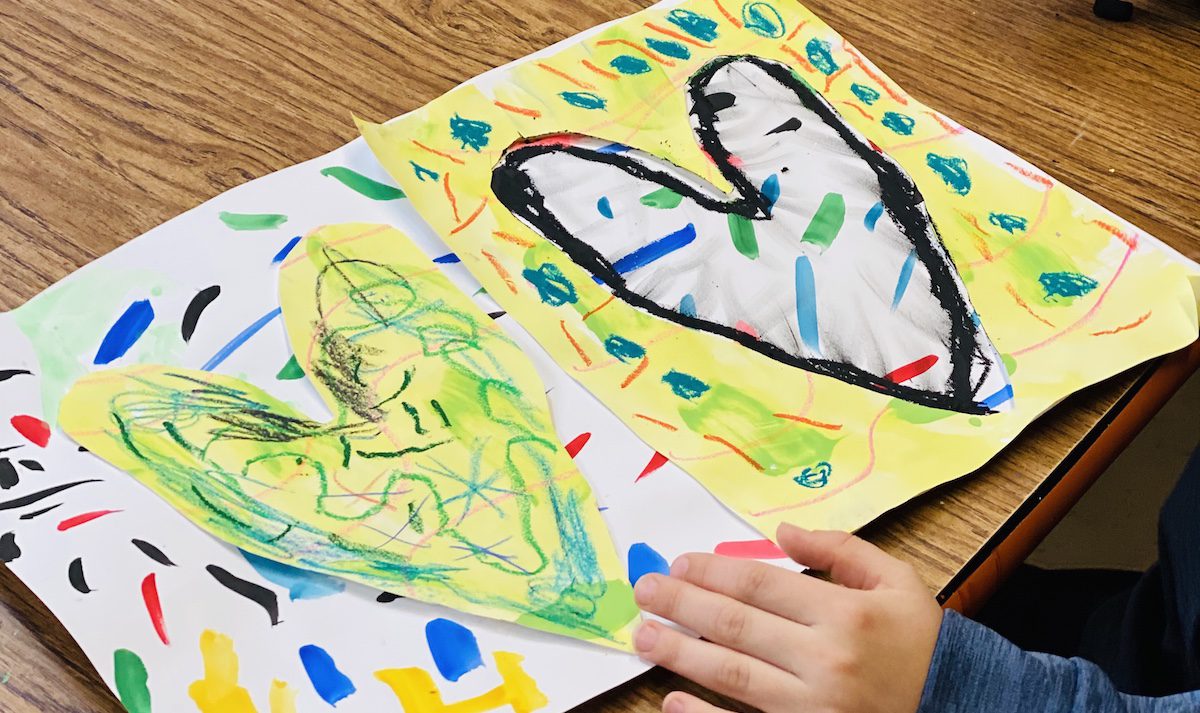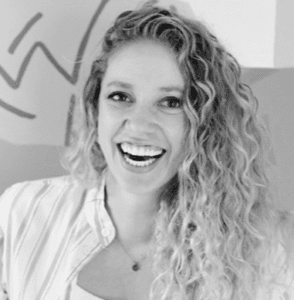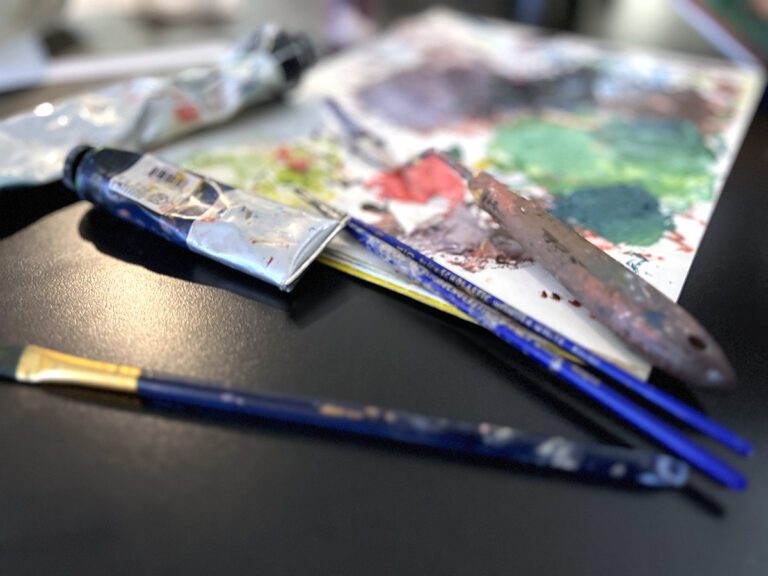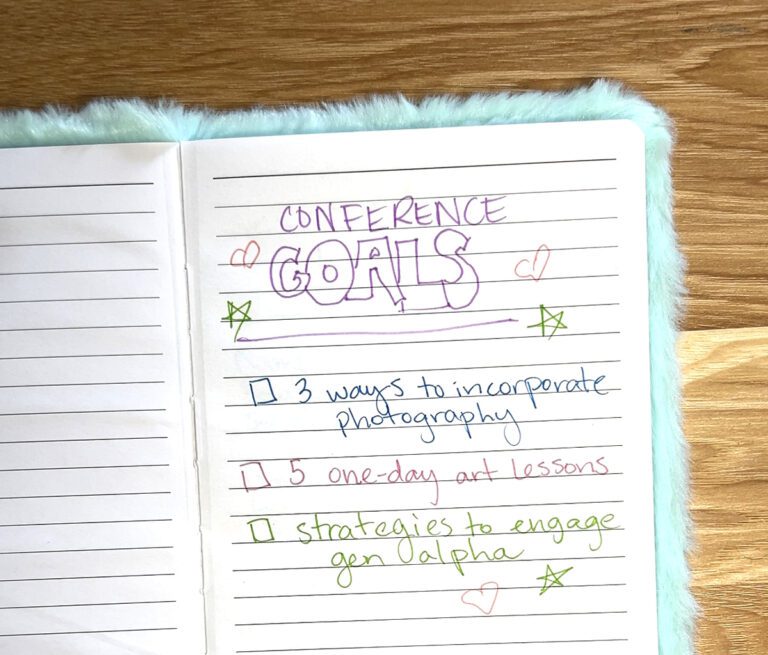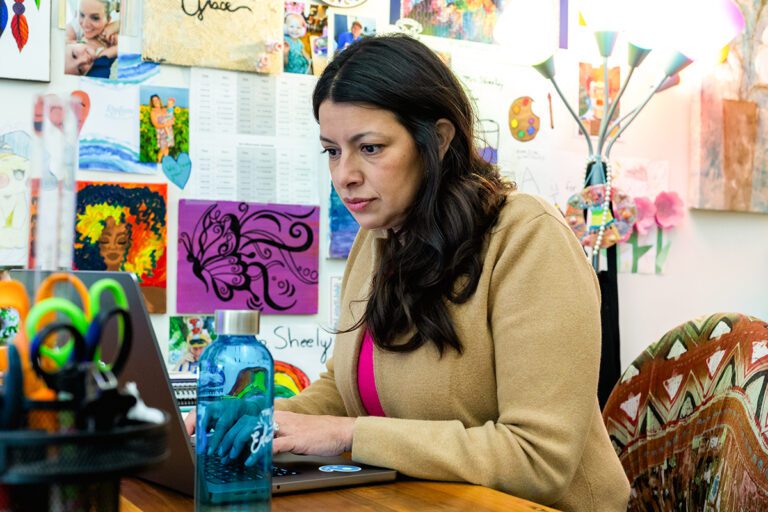Return to Learn with The Art of Education University
The COVID-19 pandemic has left many of us with an overwhelming sense of trauma. Our lives, routines, relationships, and sense of “normal” have been shaken up and completely turned upside down.
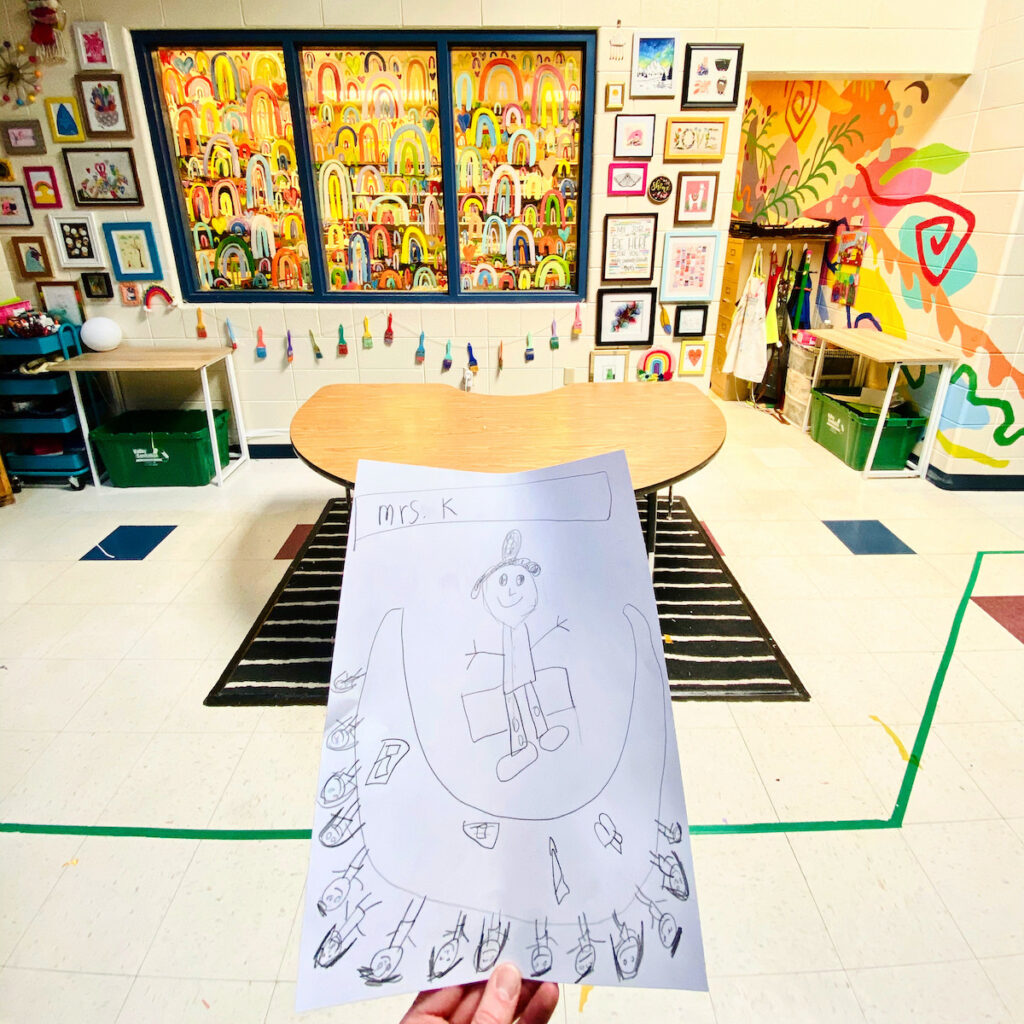
I must also take note that I believe we cannot appropriately address the trauma of COVID-19 without also addressing the continuous trauma of racial injustice. The disproportionate effect of COVID-19 and continued racial injustices on the BIPOC community leaves adults with the responsibility to address two sources of trauma: the pandemic and injustice. As teachers are going back to school, the weight of the world can feel as if it rests heavily on our shoulders.
You are not alone in your overwhelming feelings of confusion, depression, fear, and anxiety.
Of hundreds of art teachers surveyed in the AOEU Back to School 2020 Survey, 46% of art teachers said they were not comfortable returning to school, and 33% were unsure about their comfort level in returning to school. Acknowledging nearly 80% of art teachers are concerned and confused about their feelings regarding returning to school is evidence you are not alone in the way you feel. Because so many of us are feeling all of this at once, it actually has a name: collective trauma.
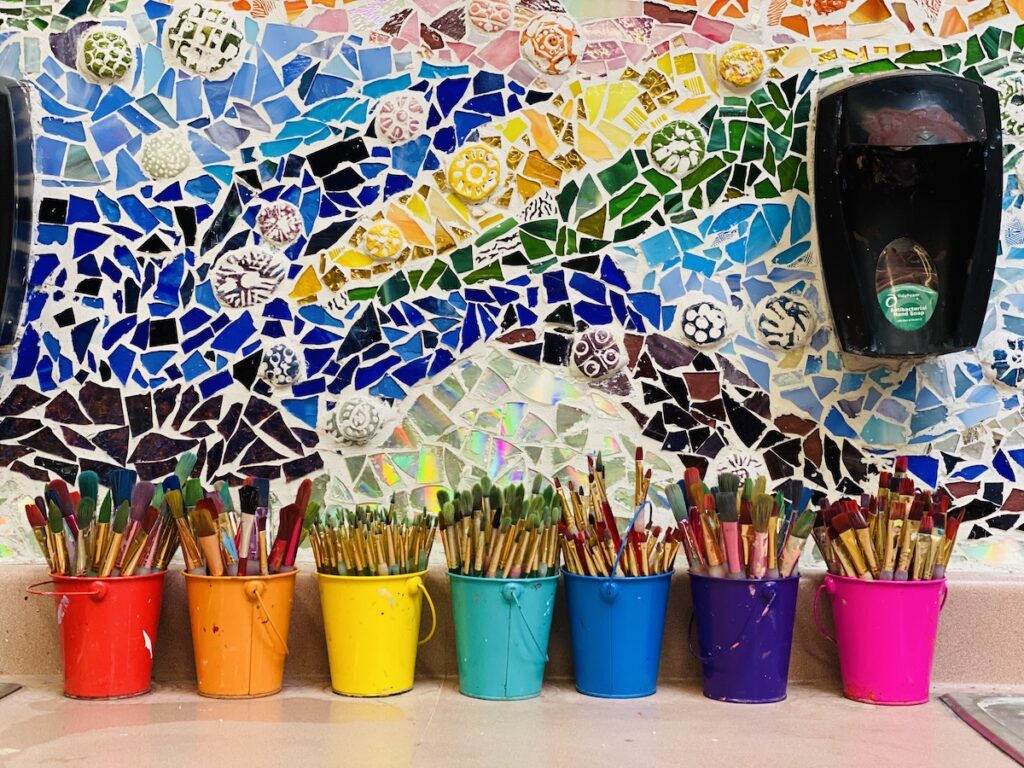
What is collective trauma?
While trauma refers to a traumatic event that affects one person or a small group of people, “Collective trauma refers to the impact of a traumatic experience that affects and involves entire groups of people, communities, or societies.”
Living in a pandemic is a real-life example of collective trauma.
As teachers, from essentially creating a distance learning program overnight, to constantly worrying about the health and safety of ourselves and loved ones, we are all experiencing some level of collective trauma.
How can we combat our own anxieties and address collective trauma with our students?
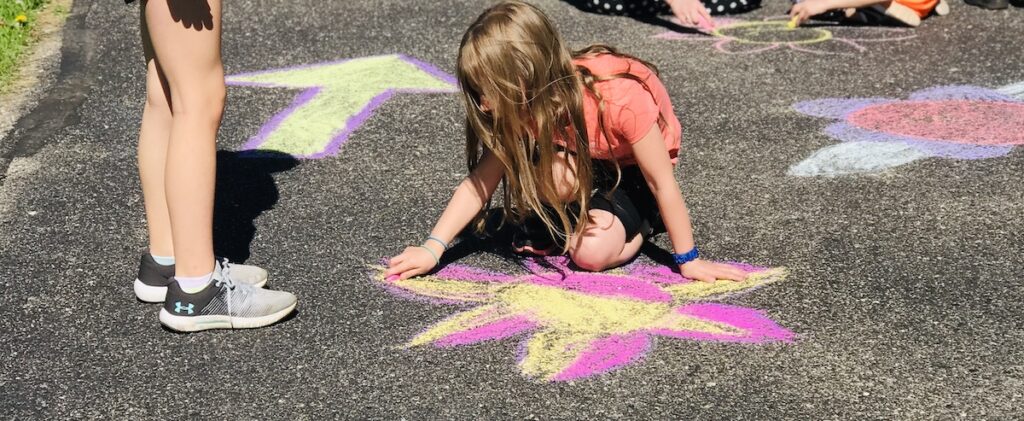
No matter what your school year looks like, our top focus is going to be to support the Social and Emotional Learning (SEL) needs of ourselves and our students. This is a time for recovery, support, and connectedness in whatever way possible. We shouldn’t pretend everything is “normal”… because it’s not. By addressing how we are all dealing with what is happening around us, we can better learn where to find and offer appropriate support for our families and students.
According to our AOEU Back to School 2020 Survey, teachers’ number one area of importance this year is addressing SEL. Of art teachers’ responses, 53% have schools that are encouraging them to shift curricular focus to SEL. Not surprisingly, 82% of art teachers listed their number one concern as “Having difficulty connecting with my students.”
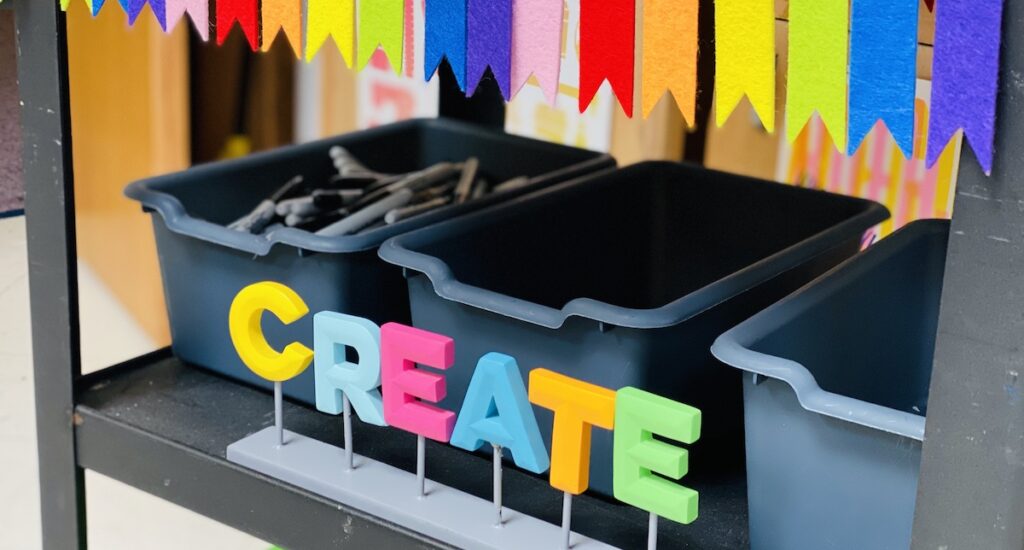
NEA Today reminds educators, “This isn’t just about academics and ‘catching up.’ School leaders must first rebuild safe spaces for students that will help them and educators navigate the trauma they’ve experienced. Students were cut off from friends. Other familiar faces—a favorite teacher, the bus driver who greeted them every morning, the counselor who helped them through the hard days, the cafeteria worker who served their lunch—were also suddenly absent from their daily lives.”
The evidence is clear. Our focus needs to be on supporting our own mental health and the SEL needs of our students. So, exactly how can we support the SEL needs and mental health of ourselves and our students?
Try a few of these tips to help your students’ SEL needs:
- Teach students mindful breathing techniques to help calm feelings of fear and anxiety.
- Create a calm, safe, predictable classroom environment either online or in-person.
- To help guide student focus, have students repeat verbal directions, use written instructions, and use visual prompts for complicated directions.
- Include short “movement breaks” to help reset the brain for learning.
- Extend empathy and respect for the differing journeys of every individual around you.
- Take care of your body. When your body feels good (adequate sleep, nutrition, exercise, and activity), you will feel better overall.
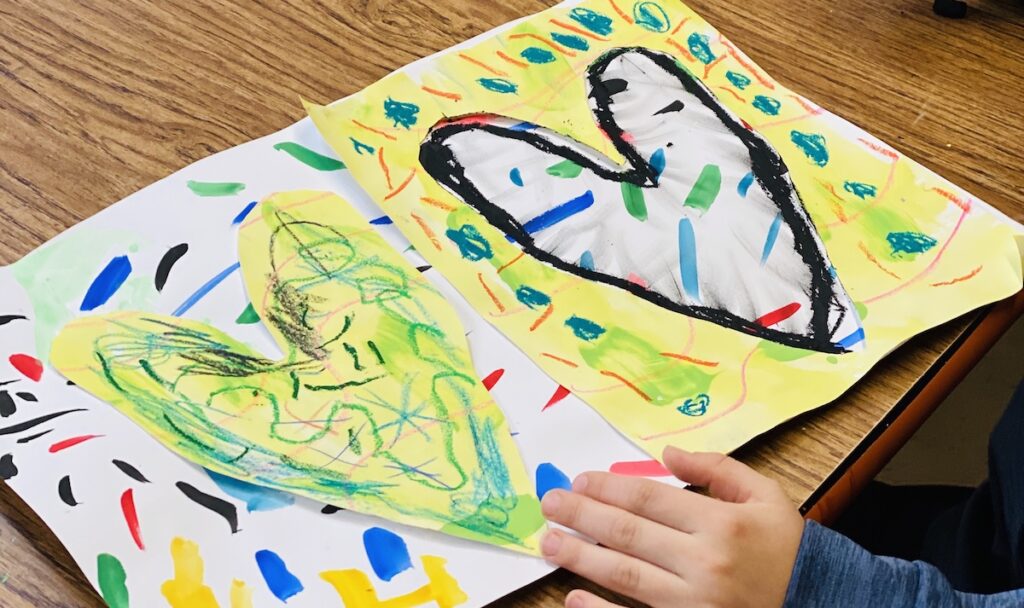
Try a few of these tips to help with your own mental health:
- Make a connection and collaborate on projects and conversations with your school counselor.
- Seek out the help and support of mental health professionals such as a therapist. If you are unable to secure mental health check-in’s with your provider, try the SAMSHA National Helpline.
- Check-in often with your “chosen family” support group of friends, co-workers, and family members. They can help offer support when you need it and will want to be there to celebrate your successes.
- Prioritize creating your own art. It can be something as simple as a small doodle each day, drawing digitally, or painting outside in the fresh air. As art teachers, we know the therapeutic benefits of personal artmaking.
- Find professional development directly related to trauma-informed teaching such as this free webinar “What About You? Strategies for Supporting Educator Resilience and Trauma-Informed Self-Care.”
- Ask yourself, “What can YOU control?” Try to keep the things outside of your circle of control in perspective and don’t allow those uncontrollable situations to take over your life.
- Keep it simple. Don’t make anything more complicated than it needs to be. So many of us are in survival mode, working hard to maintain our basic needs in the pyramid of Maslow’s Hierarchy of Needs.
- Normalize your struggles and continue being compassionate. Kindness and empathy can go a long way.
Remember, however you feel, you’re not alone. We are not all in the same boat, but we are all floating on the same body of water.
There are going to be good days and not-so-good days as we all return to school. The rollercoaster of emotions over the past few months have been traumatic for us all. There is no “right” or “wrong” way to feel.
Return to Learn with The Art of Education University
What concerns you most when it comes to supporting your students and dealing with trauma?
What SEL resources do you find most helpful?
Are you surprised by the data from our AOEU Back to School 2020 Survey?
Magazine articles and podcasts are opinions of professional education contributors and do not necessarily represent the position of the Art of Education University (AOEU) or its academic offerings. Contributors use terms in the way they are most often talked about in the scope of their educational experiences.
